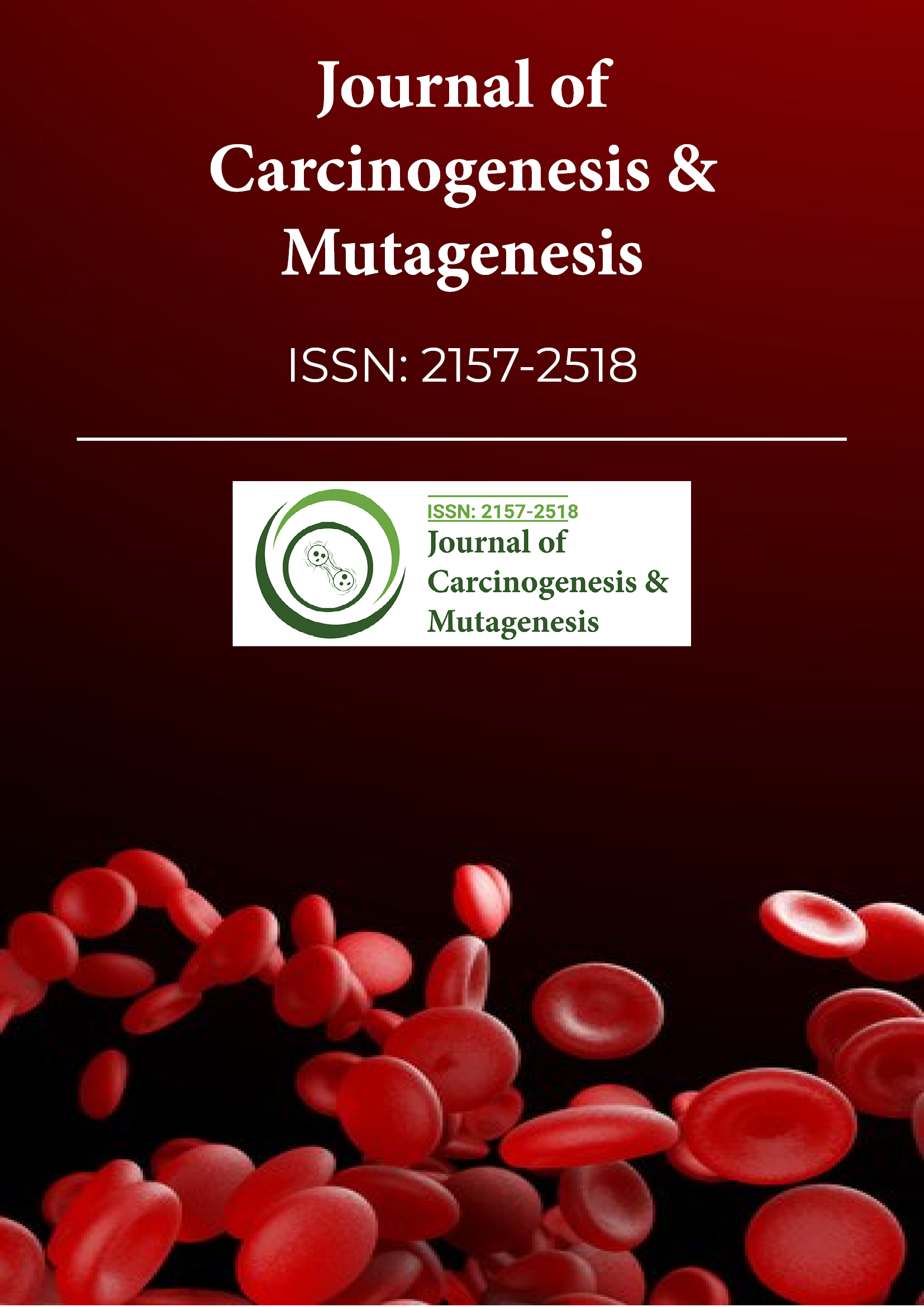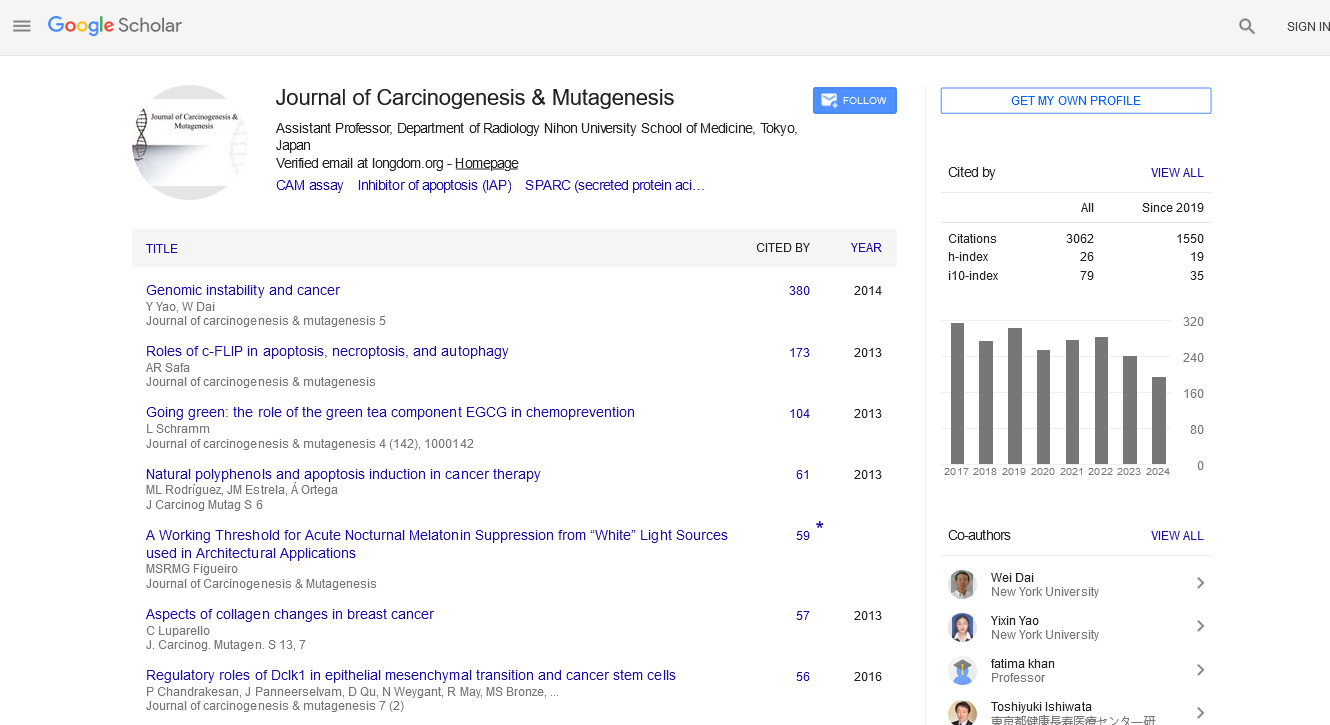Indexed In
- Open J Gate
- Genamics JournalSeek
- JournalTOCs
- Ulrich's Periodicals Directory
- RefSeek
- Hamdard University
- EBSCO A-Z
- OCLC- WorldCat
- Publons
- Geneva Foundation for Medical Education and Research
- Euro Pub
- Google Scholar
Useful Links
Share This Page
Journal Flyer

Open Access Journals
- Agri and Aquaculture
- Biochemistry
- Bioinformatics & Systems Biology
- Business & Management
- Chemistry
- Clinical Sciences
- Engineering
- Food & Nutrition
- General Science
- Genetics & Molecular Biology
- Immunology & Microbiology
- Medical Sciences
- Neuroscience & Psychology
- Nursing & Health Care
- Pharmaceutical Sciences
Commentary - (2025) Volume 16, Issue 3
The Role of Programmed Cell Death in Cancer Development and Therapy
Dong Gil*Received: 31-May-2025, Manuscript No. JCM-25-29461; Editor assigned: 02-Jun-2025, Pre QC No. JCM-25-29461 (PQ); Reviewed: 16-Jun-2025, QC No. JCM-25-29461; Revised: 23-Jun-2025, Manuscript No. JCM-25-29461 (R); Published: 30-Jun-2025, DOI: 10.35248/2157-2518.25.16.476
Description
Apoptosis, or programmed cell death, is a tightly regulated cellular mechanism essential for maintaining tissue homeostasis, embryonic development, and immune defense. Unlike necrosis, which results from acute cellular injury, apoptosis is a genetically controlled process characterized by cell shrinkage, chromatin condensation, DNA fragmentation, and eventual phagocytosis of the apoptotic bodies without eliciting an inflammatory response. Its role in eliminating damaged, infected, or potentially dangerous cells makes it a vital defense mechanism against cancer. However, dysregulation of apoptosis can contribute significantly to carcinogenesis and mutagenesis, rendering it a critical focus in cancer research.
In a healthy organism, apoptosis serves as a safeguard against uncontrolled cell proliferation. Cells that accumulate harmful mutations in their DNA are often flagged for elimination via apoptotic pathways. The p53 protein, often dubbed the "guardian of the genome," plays a central role in this process. Upon sensing DNA damage, p53 can arrest the cell cycle to allow for repair or initiate apoptosis if the damage is irreparable. In many cancers, p53 is mutated or inactivated, leading to the survival and propagation of genetically unstable cells. This highlights how suppression of apoptosis can allow pre-cancerous cells to evade destruction, accumulate mutations, and develop into malignant tumors.
The extrinsic pathway, on the other hand, is initiated by the binding of extracellular ligands to death receptors on the cell surface, such as Fas and TRAIL receptors. This triggers the formation of the Death- Inducing Signaling Complex (DISC) and activation of initiator caspases like caspase-8, which then activate effector caspases. Cancer cells may evade this pathway by downregulating death receptors or producing decoy receptors that block ligand binding. Additionally, inhibitors like FLIP can block DISC formation, further allowing tumor cells to escape immune surveillance.
Mutagenesis, the process through which genetic mutations arise, is also tightly linked to defective apoptotic processes. When damaged cells escape apoptosis, they continue to divide and pass on mutations to their progeny. Over time, this accumulation of genetic alterations leads to genomic instability, one of the hallmarks of cancer. Environmental mutagens such as UV radiation, chemical carcinogens, or viral infections can induce DNA damage, and if the apoptotic response is defective, such damage can become fixed in the genome.
From a therapeutic standpoint, restoring apoptosis in cancer cells has become a major goal. Many anticancer agents, including chemotherapy and radiation, aim to induce apoptosis by damaging DNA or disrupting cellular homeostasis. However, resistance often develops due to mutations in apoptotic genes or overexpression of survival factors. Novel approaches are being explored, such as BH3 mimetics that inhibit Bcl-2 proteins, or TRAIL-based therapies that selectively activate death receptors in cancer cells. Immunotherapies also leverage apoptotic mechanisms to eliminate cancer cells through cytotoxic T-cell activity.
In conclusion, apoptosis is an essential barrier against carcinogenesis and mutagenesis. Its deregulation not only enables cancer initiation and progression but also poses challenges for effective treatment. Understanding the molecular underpinnings of apoptotic pathways and their alterations in cancer provides critical insights into tumor biology and opens up new avenues for targeted therapies. Future research into modulating apoptosis may offer more precise and potent strategies in the fight against cancer.
Citation: Gil D. (2025). The Role of Programmed Cell Death in Cancer Development and Therapy. J Carcinog Mutagen. 16:476
Copyright: © 2025 Gil D. This is an open-access article distributed under the terms of the Creative Commons Attribution License, which permits unrestricted use, distribution, and reproduction in any medium, provided the original author and source are credited.


